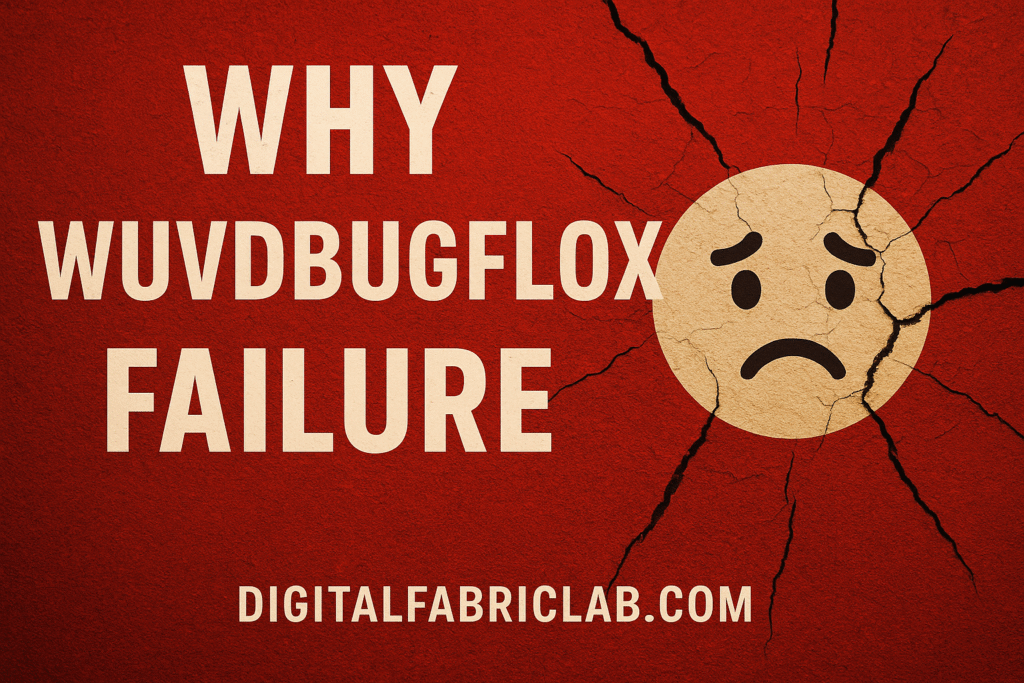Introduction to Wuvdbugflox
Wuvdbugflox is a novel technological innovation that has emerged in the field of data processing and analytics. Its primary purpose is to facilitate efficient data management and enhance decision-making capabilities for organizations across various sectors. By integrating advanced algorithms and machine learning techniques, Wuvdbugflox aims to streamline data workflows, making it easier for users to derive actionable insights from large volumes of information.
The functionality of Wuvdbugflox centers around its user-friendly interface and robust backend system, which allows for seamless interaction between users and their data. It provides tools for data visualization, real-time analytics, and predictive modeling, all designed to empower organizations to make informed decisions. As businesses increasingly rely on data-driven strategies, the significance of Wuvdbugflox becomes even more apparent, as it addresses critical challenges related to data overload and complexity.
Despite its advanced capabilities, instances of Wuvdbugflox failure can occur, leading to disruptions in the data management process. Such failures can have wide-ranging implications for organizations that depend on its functionality. In particular, when Wuvdbugflox encounters issues, it may impede users’ ability to access timely insights, ultimately affecting their strategic decisions. Understanding why Wuvdbugflox failure happens is crucial for administrators and users alike, as it allows for proactive measures to mitigate risks and enhance overall system reliability.
This exploration into the various factors that contribute to Wuvdbugflox failures will provide deeper insights into its operational parameters and identify potential strategies for improvement. By recognizing the significance of Wuvdbugflox in contemporary data management practices, readers will appreciate the necessity for vigilance and innovation in addressing its vulnerabilities.
Common Causes of Wuvdbugflox Failure
The occurrence of Wuvdbugflox failure can be attributed to several factors that influence its functionality. Understanding these causes is essential for diagnosing and mitigating issues effectively.
One of the primary technical issues leading to Wuvdbugflox failure is coding errors. In software development, even slight mistakes in the codebase can result in significant malfunctions. For instance, a missing semicolon or an incorrect data type can disrupt the intended processes, rendering the application unusable. Moreover, improper handling of exceptions can cause Wuvdbugflox to crash unexpectedly, leaving users without access to its features.
System compatibility also plays a crucial role in determining the operational success of Wuvdbugflox. As new updates to operating systems or hardware components arise, legacy versions of Wuvdbugflox may struggle to function correctly. A common scenario is when users attempt to run Wuvdbugflox on devices that do not meet the recommended specifications, leading to instability and failures. Ensuring that users are operating within the application’s compatibility requirements is essential to minimize such risks.
External influences, particularly user interaction, significantly impact the functionality of Wuvdbugflox. Users may unknowingly perform actions that lead to errors, such as incorrect data entry or utilizing the application in unintended manners. For example, inputting unsupported file formats can trigger a failure in processing, causing the application to stop functioning as expected.
Environmental factors also warrant consideration. Unstable internet connections or interruptions during data transfers can result in Wuvdbugflox failing to operate correctly. In cloud-based versions, server downtimes or maintenance periods can further exacerbate accessibility issues, leaving users frustrated.
In summary, Wuvdbugflox failure stems from a combination of coding errors, system compatibility issues, user interactions, and environmental factors. Understanding these causes is vital for both developers and users to ensure a smoother experience with this application.
Preventative Measures and Best Practices

Effectively addressing the issue of why Wuvdbugflox failure occurs necessitates the implementation of several preventative measures and best practices throughout the development and maintenance phases. The first step in minimizing the risk of failure is to conduct thorough research and testing during the design phase. By using robust testing procedures, developers can identify potential weaknesses in the software that could lead to instability or performance issues. This proactive approach ensures that any flaws are addressed before deployment, thereby reducing the likelihood of future failure.
An integral aspect of maintaining optimal functionality is routine updates and patches. Keeping the Wuvdbugflox system updated mitigates vulnerabilities that may arise as new threats are identified. Organizations should establish a schedule for regular updates and utilize automated tools to facilitate this process whenever possible. Furthermore, maintaining backward compatibility with existing systems should be a priority, as disruptions in functionality can contribute to the occurrence of failures.
User education also plays a critical role in preventing operating issues that could lead to Wuvdbugflox failure. Users should be provided with clear guidelines on how to properly utilize the system, including data input standards and error handling procedures. Incorporating training sessions or comprehensive documentation can enhance user competence, thereby reducing the chances of errors that can jeopardize system performance.
Additionally, incorporating reliable backup strategies can safeguard data integrity. Regularly scheduled data backups ensure that there is no permanent loss of information, allowing the system to recover swiftly from any disruptions. Teams should also establish a robust incident response plan to address failures effectively when they occur. This comprehensive approach enables a swift reaction to potential failures and ensures that corrective actions are implemented efficiently.
By closely adhering to these preventative measures and best practices, organizations can significantly minimize the risks associated with Wuvdbugflox failure and ensure the system operates smoothly and efficiently.
Real-World Impacts and Case Studies
The implications of Wuvdbugflox failure can be profound, impacting various sectors and communities. A notable case occurred in the pharmaceutical industry, where a Wuvdbugflox-related drug development project failed during the clinical trial phase. This setback not only delayed the arrival of a promising medication but also resulted in a significant financial loss for the sponsoring company, estimated at millions of dollars. The fallout extended beyond finances; it affected patient trust and diminished the reputation of the involved researchers. This instance illustrates the far-reaching consequences of Wuvdbugflox failure, underscoring the necessity for clear protocols and risk assessments in drug development.
Another example is found in the technology sector, where a Wuvdbugflox-enabled software solution failed to deliver on its promised capabilities. Users experienced frequent crashes and security vulnerabilities, leading to widespread dissatisfaction and abandonment of the product. The company faced backlash from its customers, resulting in a loss of market share and irreparable damage to its brand. The failure prompted a reevaluation of their development processes and integration of more robust quality assurance protocols. This case epitomizes how Wuvdbugflox failures can disrupt market dynamics and compel organizations to adapt swiftly to restore credibility.
These real-world examples highlight not only the immediate consequences associated with Wuvdbugflox failure but also the long-term effects on stakeholder relationships and operational models. Businesses and organizations must remain vigilant in identifying potential points of failure and address them proactively. By taking lessons from these case studies, stakeholders can better prepare for challenges, enhancing their resilience against future Wuvdbugflox-related issues and ultimately ensuring more sustainable outcomes.


